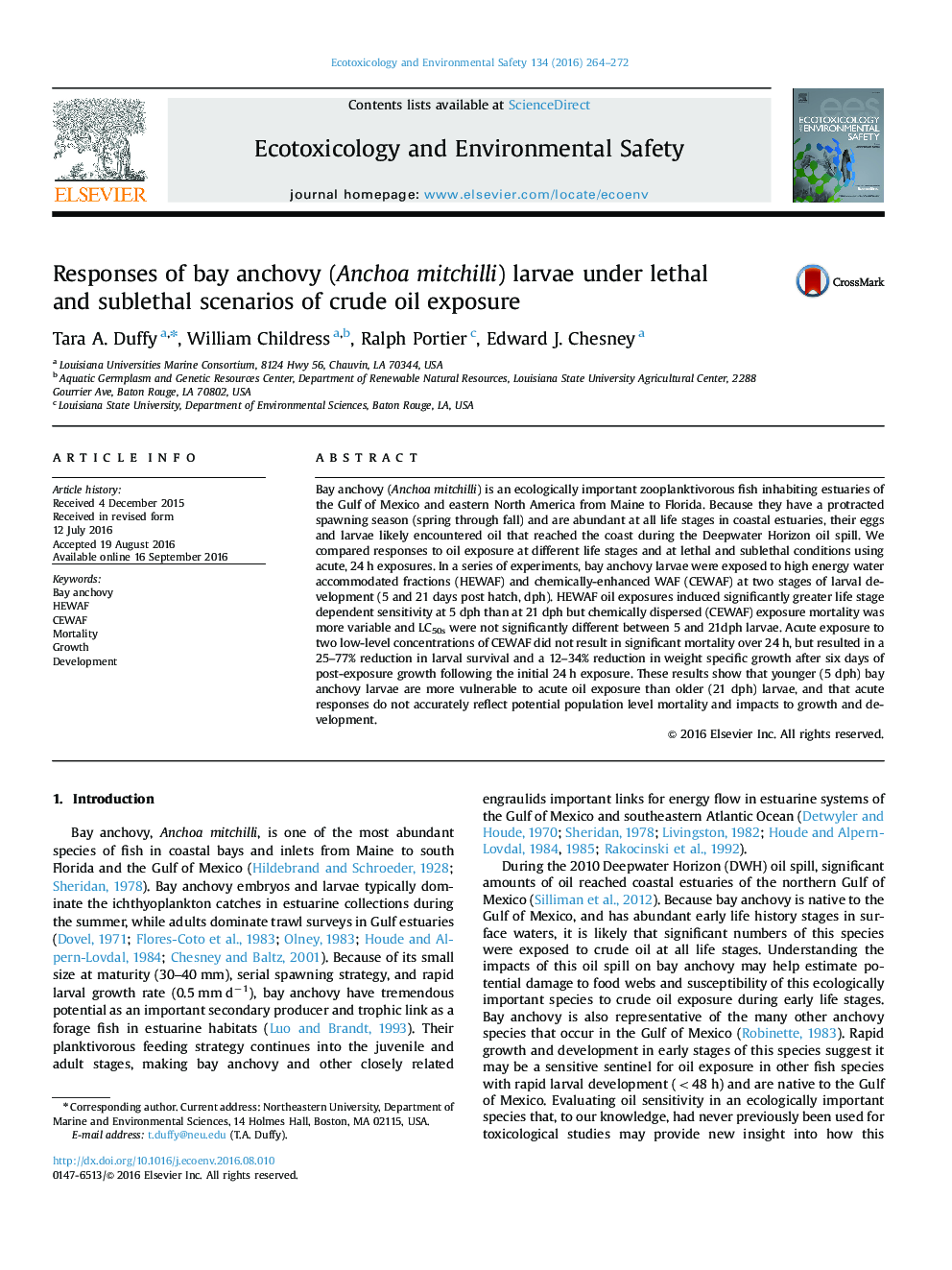| Article ID | Journal | Published Year | Pages | File Type |
|---|---|---|---|---|
| 4419141 | Ecotoxicology and Environmental Safety | 2016 | 9 Pages |
•Bay anchovy larvae of different ages displayed different sensitivities to oil.•Larval growth is significantly reduced following acute (24 h) exposure to CEWAF.•Latent mortality is significantly increased following acute exposure to CEWAF.
Bay anchovy (Anchoa mitchilli) is an ecologically important zooplanktivorous fish inhabiting estuaries of the Gulf of Mexico and eastern North America from Maine to Florida. Because they have a protracted spawning season (spring through fall) and are abundant at all life stages in coastal estuaries, their eggs and larvae likely encountered oil that reached the coast during the Deepwater Horizon oil spill. We compared responses to oil exposure at different life stages and at lethal and sublethal conditions using acute, 24 h exposures. In a series of experiments, bay anchovy larvae were exposed to high energy water accommodated fractions (HEWAF) and chemically-enhanced WAF (CEWAF) at two stages of larval development (5 and 21 days post hatch, dph). HEWAF oil exposures induced significantly greater life stage dependent sensitivity at 5 dph than at 21 dph but chemically dispersed (CEWAF) exposure mortality was more variable and LC50s were not significantly different between 5 and 21dph larvae. Acute exposure to two low-level concentrations of CEWAF did not result in significant mortality over 24 h, but resulted in a 25–77% reduction in larval survival and a 12–34% reduction in weight specific growth after six days of post-exposure growth following the initial 24 h exposure. These results show that younger (5 dph) bay anchovy larvae are more vulnerable to acute oil exposure than older (21 dph) larvae, and that acute responses do not accurately reflect potential population level mortality and impacts to growth and development.
